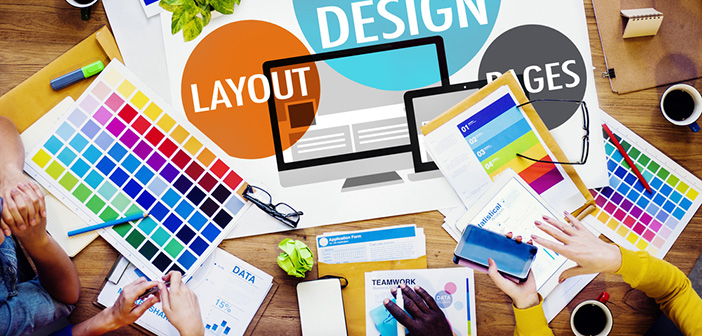
Disclaimer: Magenticians does not necessarily agree with the views expressed in this guest post. They are presented to bring to light all diverse views in the Magento and general ecommerce community.
The design and development stage of an ecommerce store presents unique challenges that every designer or developer has to face. It’s also easy to see what works and helps the website with the help of so many tools out there. However, there are a number of factors that can affect the success of an ecommerce store, and identifying the areas of strength and weakness is not always as simple as we think.
In this article, I’ll give you ecommerce web design tips that are generally present in a well-designed ecommerce store, and you must keep these in mind while designing yours.
Proper Navigation
The foremost important thing when you want to sell a product is that your users should be able to find it easily. Smart navigation is important for any website, but it’s far more critical for an ecommerce store. If you lose visitors you lose sales, so every effort should be made to have a site with clear and sensible navigation.
The larger an ecommerce store is, developers have to be especially careful with its navigation because finding what users want will usually become difficult with so many options and pages. In order to come to a sensible conclusion about the search habits of an average user, you’ll have to test your search tool many times. What makes sense to the designer of the website may not be the same path that an average visitor takes to find the product. User navigation testing is extremely helpful for identifying possible navigational issues.
Design Match with Product
Ecommerce stores should focus mainly on the products that are available in the store to purchase. A design that is over the top will draw attention to the design of the site and away from the products. I suggest that you design ecommerce sites with a minimal design approach.
Even big ecommerce websites like Amazon, Flipkart, and eBay, etc., have a simple design. Hence, keep the design of your store as simple as possible to help people navigate easily.
Check out Must Be Easy
If the checkout process has too many steps or is confusing, a user may cancel the purchase. Usually, the check out should involve only a few steps and should be as easy as possible for the users. If the website asks the user to give their personal information, then it may avoid purchasing the product.
Branded
Many users prefer the brands they know, and so the need to establish a strong brand is one of the important factors for both online and offline selling. Most of the user turn to Amazon because now Amazon has become a brand in the ecommerce world. And the other thing we see is that the store that sells online as well in the physical store, the site is only a part of an overall branding strategy. In these cases, the website should work well with other branding efforts of the company so that customer feels comfortable purchasing product from the website.
The Design Style Matches the Product
Ecommerce sites can have countless unique design styles. However, when designing an ecommerce site, it’s important to consider the style of the products that we will sell on our store.
This factor is more in effect when the store has an only specific type of product and for the website of particular brand or company that established a certain identity.
If the website design style doesn’t match with the particular product that is for sale, there will be a disconnect that exists and visitors may have a hard time relating to products.
Showcases the Most Popular Products
Many ecommerce stores make efforts to showcase items that are likely to be of interest to the visitors. A number of sites use large area on the homepage that they can use to promote current sales, new arrivals, Deal of the day, Rating products or whatever will generate interest. On these type of sites, the front page needs to be updated frequently.
Promotes Related Products on the Product Page
One of the keys to a successful ecommerce website is the promotion of a related product that the customer may also be interested in. For e.g., if your store is selling a laptop, the page should also show the related products as a laptop bag and laptop cover, etc. Sometimes it will list and be shown on the product detail pages, and other times you will see suggestions being made after adding an item to your cart.
Effective Product Images
Selling online is different than selling in a physical store because the buyer can’t touch the product and feel before deciding to buy it. Providing quality images using free mockups, can help overcome this challenge and helps customers make the buying decision easier. We can also provide angular images. The user can see the product from every angle so they can easily decide what the product looks like.
Effective Site-Wide Search
On average, a user requires three clicks to reach a product on an ecommerce store. It’s better that the user reaches their product within three clicks, but it’s only possible with effective search features. Sometimes visitors will have trouble finding a specific product even when the site has good navigation. So making their search easy will help them navigate and make purchases without any difficulties.
So now that you know all the ecommerce web design tips of designing a great looking ecommerce website, you should not have any difficulty helping your customers make better decisions!
Author Bio
This is a guest post from Jayesh Gori, who is an Assistant Ecommerce Engineer at Emipro Technologies (P) Ltd.

